- Administrator
- Albums and Singles

Diamanda Galás' debut album The Litanies of Satan, originally released on Y Records in 1982, is reissued on the artist's own Intravenal Sound Operations label in LP, CD and digital formats. The album has been meticulously remastered from the original Y Records analogue tapes by Diamanda and engineer Heba Kadry and features the original classic artwork of that release. Vinyl includes poster.
This the first release in a new reissue campaign since Diamanda regained ownership and control of her entire catalogue in 2019.
-"The Litanies of Satan" (from the poem by Charles Baudelaire)
Devotes itself to the emeraldine perversity
of the life struggle in Hell.
-"Wild Women with Steak-Knives"
(from the tragedy-grotesque by D. Galás "Eyes Without Blood")
Is a cold examination of unrepentant monomania,
the devoration instinct, for which the naive notion
of filial mercy will only cock a vestigial grin.
More information can be found here.
Read More
- Administrator
- Albums and Singles
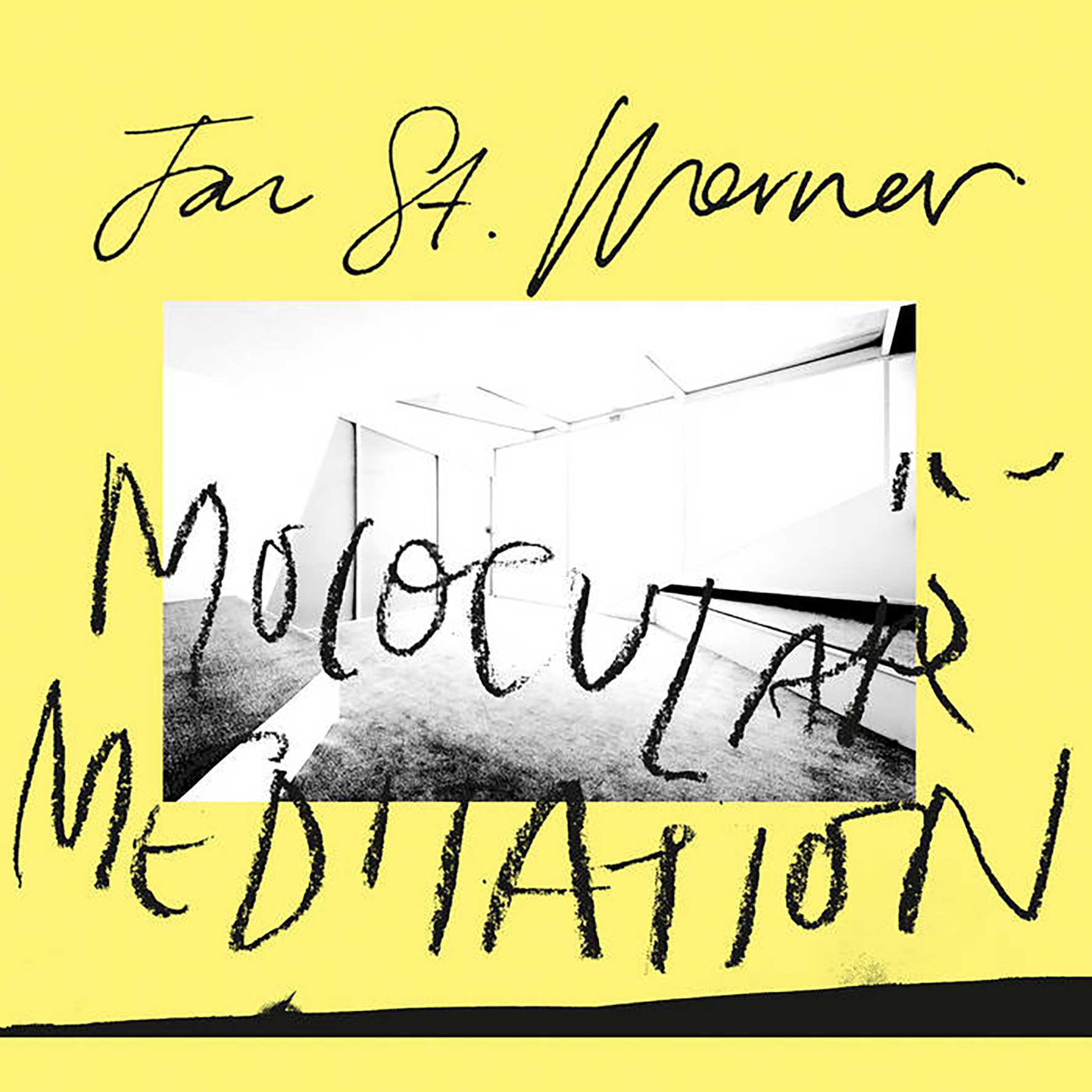 I cannot say that I love every one of Jan St. Werner's bizarre solo albums, but his unwavering passion for pure experimentation and escalating unfamiliarity is certainly admirable and endearing. On this latest release, however, he takes a break from his extremely outré Fiepblatter Catalogue project to celebrate the incomparable ramblings of his former Von Südenfed bandmate: the late Mark E. Smith. The heart of the album is an edit of a "bespoke light and sound environment" that first premiered in Manchester back in 2014, while the remainder is (for the most part) fleshed out with some orphaned, Smith-centric work that was composed for other reasons. Unsurprisingly, it is Smith's near-constant presence as a cranky, surrealist raconteur that provides most of Molocular Meditation's charm, but St. Werner's noisy, blurting and scattershot electronics do a effective job of creating a disorienting "sci-fi dystopia" backdrop for those musings. At its best, Molocular Meditation feels like Smith's voice erupting through the noisy squall of a bank of malfunctioning computers, but the album has a whole is a prickly, challenging, and elusive affair (which, I suppose, is exactly what I expect from St. Werner at this stage in his career).
I cannot say that I love every one of Jan St. Werner's bizarre solo albums, but his unwavering passion for pure experimentation and escalating unfamiliarity is certainly admirable and endearing. On this latest release, however, he takes a break from his extremely outré Fiepblatter Catalogue project to celebrate the incomparable ramblings of his former Von Südenfed bandmate: the late Mark E. Smith. The heart of the album is an edit of a "bespoke light and sound environment" that first premiered in Manchester back in 2014, while the remainder is (for the most part) fleshed out with some orphaned, Smith-centric work that was composed for other reasons. Unsurprisingly, it is Smith's near-constant presence as a cranky, surrealist raconteur that provides most of Molocular Meditation's charm, but St. Werner's noisy, blurting and scattershot electronics do a effective job of creating a disorienting "sci-fi dystopia" backdrop for those musings. At its best, Molocular Meditation feels like Smith's voice erupting through the noisy squall of a bank of malfunctioning computers, but the album has a whole is a prickly, challenging, and elusive affair (which, I suppose, is exactly what I expect from St. Werner at this stage in his career).
It would be misleading to describe the opening "Molocular Meditation" as "noise," but it would probably be even more misleading to describe it as anything resembling music in the conventional sense.Instead, it would be more apt to characterize it is a mechanized and lysergic maelstrom or like a complex public address system prone to frequent disruptions and malfunctions. In more practical terms, it feels like several disparate motifs were loosely stitched together and mingled with improvisational flourishes that embellish Smith's playfully hammy and disjointed pronouncements.The overall effect is quite an unusual one, as the piece repeatedly seems like it is poised to cohere into a structured melodic or rhythmic framework only to collapse again or get blasted with a torrent of harsh static.Throughout it all, it is difficult to tell exactly what St. Werner is attempting to do or whether or not he is succeeding, as the blurting, unpredictable electronics often feel more like an intrusion than an enhancement: the piece sounds just fine when Smith's voice is accompanied by only a quiet hum or no sound at all.
Naturally, Smith's own contributions are frequently entertaining and endearingly wrong-footing, as he unpredictably bounces between welcoming me to the installation, providing meticulously detailed breakdowns of his availability on Thursdays, and making cryptic pronouncements like "the disclaimer is always the first martyr" or "the word 'fantastic' is obscene."As a result, I cannot help but imagine a more effective piece in which St. Werner just stuck to expanding upon one of his more promising themes and devoted the rest of his efforts to layering and processing Smith's vocals. That said, this album was not the context that "Molocular Meditation" was created for, so maybe the piece's erratic, shifting nature was perfect for its original "light and sound environment."In any case, it is a deeply bizarre and difficult-to-grasp piece, but it does contain some weirdly beautiful and poetic moments.
The album's second half consists of two short pieces that feature Smith and one longer one ("On The Infinite Of Universe And Worlds") that does not.All are considerably more linear and conventionally structured than the title piece, but it would still be a stretch to describe them as proper songs.That said, I suppose "Back to Animals" has at least a distant kinship to Von Südenfed, as Smith delivers a monologue over a dense and semi-consistent rhythmic pulse featuring some spectral hints of a melodic hook and a chord progression.However, it also shares a good amount of the title piece's unpredictability and precariousness, as the skittering, clattering rhythm always seems like it is about to derail.Von Südenfed is more explicitly referenced with the closing "VS Cancelled," which is essentially just a morbidly entertained Smith reading an email from Domino about their decision to drop that project (albeit over a shifting bed of gurgling electronics and clanking metal). The Smith-free "On The Infinite Of Universe And Worlds," on the other hand, is a fairly focused and substantial piece.Clocking in around twelve minutes, it is curiously billed as an "electronic opera based on Giordano Bruno's Renaissance writings," though it lacks just about every characteristic that I normally associate with opera (singing, characters, plot, lengthy duration).It certainly is a likable piece, however, as it is built upon a semi-linear and consistent foundation of skipping pulses that is gradually disrupted and pulled apart en route to a crescendo of a man shouting in Italian (presumably not Bruno himself, given the notorious lack of high-end recording equipment in sixteenth century Europe).
For the most part, I genuinely enjoy most of this album even if I cannot pretend to understand what St. Werner was thinking when he made it.While I would not necessarily describe it as "a mixed bag," it is a weirdly fragmented release with a very hazy unifying aesthetic.For example, the title piece would make some sense to me if this was an unusually experimental Mark E. Smith album that brought in St. Werner as a collaborator.This is Jan St. Werner album though.It also does not seem like there is any ambitious concept driving this album, nor does it seem like much of St. Werner's top shelf, cutting-edge material made it into these songs.Again, that would sense if the music was intended as mere backdrop or frame for Smith’s entertaining monologues, but the music is loud and intense enough to compete for my focus.Thankfully, that is not a fatal flaw, as Smith was such an amusing and iconic presence that even disjointed snatches of his voice punctuated by eruptions of noise are absorbing enough to carry an album.Perhaps St. Werner intuitively understood that and decided to make Molocular Meditation interesting by mangling and disrupting something what could otherwise have been a predictable and straightforward delight.Which, of course, feels like a weirdly apt decision for a Mark E. Smith tribute: anything less than the caustic, the messy, and the inscrutable would an affront to everything that Smith stood for.
Samples can be found here.
Read More
- Administrator
- Albums and Singles
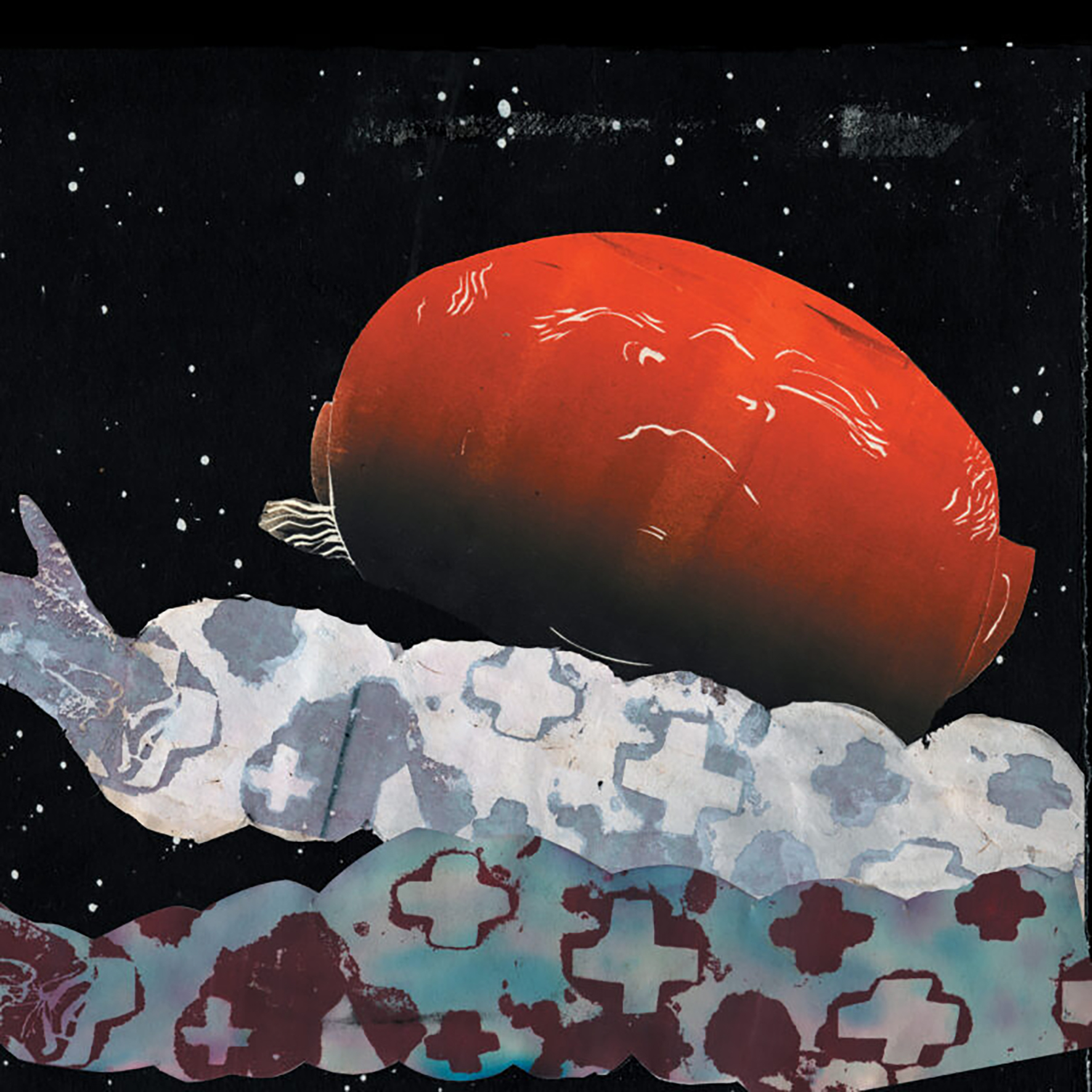 If someone had told me twenty years ago that Cerberus Shoal would someday evolve into a '60s girl group-style family band, I probably would have thought that I had fallen asleep and was having an extremely weird and perplexing dream. Nevertheless, that improbable future has now come to pass with Do You Wanna Have a Skeleton Dream?, which is Colleen Kinsella and Caleb Mulkerin's first album to feature their daughter Quinnisa as a full member of the band. As befits such an auspicious occasion, Skeleton Dream is an especially fun and ambitious anomaly within the already unpredictable Big Blood discography. While I am hesitant to describe any release by this long-running Portland, Maine project as a "party album," such a classification would not be terribly wide of the mark here, as this release is comprised almost entirety of hooky, retro-minded pop songs. Characteristically, however, Skeleton Dream's appeal runs quite a bit deeper than a mere collection of entertaining classic pop pastiches, occasionally catching me off-guard with some wonderfully haunting and darkly hallucinatory moments.
If someone had told me twenty years ago that Cerberus Shoal would someday evolve into a '60s girl group-style family band, I probably would have thought that I had fallen asleep and was having an extremely weird and perplexing dream. Nevertheless, that improbable future has now come to pass with Do You Wanna Have a Skeleton Dream?, which is Colleen Kinsella and Caleb Mulkerin's first album to feature their daughter Quinnisa as a full member of the band. As befits such an auspicious occasion, Skeleton Dream is an especially fun and ambitious anomaly within the already unpredictable Big Blood discography. While I am hesitant to describe any release by this long-running Portland, Maine project as a "party album," such a classification would not be terribly wide of the mark here, as this release is comprised almost entirety of hooky, retro-minded pop songs. Characteristically, however, Skeleton Dream's appeal runs quite a bit deeper than a mere collection of entertaining classic pop pastiches, occasionally catching me off-guard with some wonderfully haunting and darkly hallucinatory moments.
One primary characteristic of the '60s "girl group" milieu has always been the conspicuous lack of men (aside from those lurking behind the scenes), so it is appropriate and fitting that Caleb Mulkerin relegates himself to more of a background role for this album.While the songs are all strong enough to ensure that his decreased role does not feel like a liability, it is quite significant, as Mulkerin's ragged yelp has always been one of Big Blood's most endearing and distinctive features.Consequently, the introduction of Quinnisa as a new lead vocalist makes for quite a striking shift in tone, steering the band in sweeter, more unabashedly "pop" direction on songs like the bouncy, piano-driven "Real World" and lilting, bittersweet "Insecure Kids."On the opening, "Sweet Talker," however, Quinnisa's trebly, distorted vocals sound somewhere between those of her mother and some Motown-era soul belter.Given that this is a Big Blood album, however, each member ultimately winds up filling a number of different roles, so Quinnisa also surfaces throughout the album as a drummer, trombonist, guitarist, and bassist.She does appear one more time as a lead vocalist on the album's most leftfield surprise though, as Do You Wanna Have a Skeleton Dream? ends with a surprisingly reverent and straightforward duet performance of "Ave Maria."Recording unexpected and eclectic cover songs has become something of a Big Blood tradition in recent years, but I was still a bit blindsided to see Franz Schubert joining the ranks of Silver Apples, Missy Elliot, Bob Seger, Lloyd Cheechoo, and The Cure. 
The best pieces on the album, however, tend to be those that do not stray quite so far from Big Blood's usual fried, psych-damaged twist on Americana.My favorite is "Heaven or South Portland," which surrounds its darkly melancholy pop center with a lush, hallucinatory swirl of harmonium drones, wailing backing vocals, and woozy trombone melodies.I am also quite fond of the album's other harmonium-driven piece ("Pox"), which inventively appropriates the "You are sleeping, you do not want to believe" sample from The Smiths' "Rubber Ring" as a chorus hook for something that resembles a hallucinatory sea-shanty sung by a Siren.That is weirdly appropriate, given the phrase's original source: a flexi-disc that accompanied a 1971 book on ghosts and electronic voice phenomena.While I tend to prefer the stranger fare in general, some of the album's "classic pop" concoctions are weighty enough to make an impact as well, as Colleen Kinsella is too much of a force of nature to ever fit comfortably into a hooky, straightforward pop song (no matter how melodically and structurally conventional the rest of the song might be).For example, the otherwise bouncy and upbeat "Providence" is beautifully eclipsed and elevated by the soulful, sharp-edged intensity of the vocals.The underlying music also features some cool twists at times, as the conventionally pretty "Sugar" is nicely enhanced by twanging, sliding guitars and killer backing vocals, resembling something that would be perfectly at home in the half-innocent/half-lurid universe of David Lynch.
Notably, the album takes its title from a recording of Quinnisa as a small child in which she proclaims that her favorite thing to do before bed is "have a skeleton dream."That recording fittingly opens the album and feels like a weirdly apt summation of the album's aesthetic: the whole thing feels kind of dreamlike and tinged with darkness, but it is ultimately quite a fun place to be.And if I wanted to go one step further with a labored metaphor, I could even say that Big Blood have conjured up an alternate reality in which the corpse of pre-rock n’ roll pop music has been reanimated in delightful and non-terrifying fashion.In any case, I certainly did not expect to like this album nearly as much as I do, as I am very much burned-out on '50s and '60s pop and generally averse to "genre tourism" indulgences, yet Big Blood have managed to strike the perfect balance between weirdness, homage, songcraft, and art.Even if I do not love every song, Do You Wanna Have a Skeleton Dream? is a remarkably coherent, effective, and listenable departure that never errs far enough in any direction to break the perfect spell.Moreover, Quinnisa's inclusion brings some additional light, joie de vivre, and playfulness to this project without sacrificing much in the way of gravitas.Admittedly, Big Blood were hardly hurting in that regard before, as Kinsella and Mulkerin's passion and humor has always been evident and this project has always been an obvious labor of love for their family.Still, heightening some of the most appealing aspects of the band can only be a good thing.I like this album quite a lot: it may not be a particularly representative album within Big Blood's wonderful oeuvre or feature an unusually high number of instant classics, but it is nevertheless one of their strongest, tightest, and most focused statements to date.
Samples:
Read More
- Administrator
- Albums and Singles
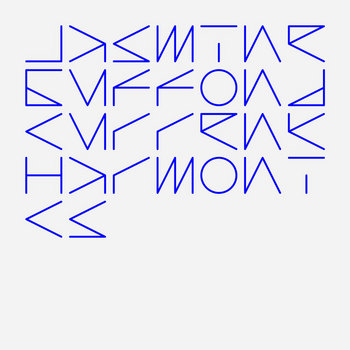
Longform Editions, the Sydney-based collective for deep listening begins 2020 with its 12th edition, once again featuring four diverse artists creating immersive experiences in sound composition attuned to ideas of deep listening. Now featuring 48 artists in total, Longform Editions has become a space for exploration: for the pure aesthetic of sound, reclamation of time and concentration. Longform Editions seeks to offer a way to navigate the overlap between physical experience and digital space.
We’re excited to present new work from Berlin-based Australian Jasmine Guffond, prior to her upcoming full-length on legendary label Editions Mego. Her heady, fascinating Current Harmonics mimics the motion of falling water using frequencies generated by the electricity powering a hydroelectric dam:
"Deep Listening for me is to focus uniquely on sound, and thereby on the moment. Akin to an alternate state of consciousness perhaps not unlike forms of meditation"
Feted by Pitchfork as "standard-bearers of globe-trotting ambient and psychedelic techno," long-running Belgian collective Pablo’s Eye contribute Tentative d'épuisement d'un lieu parisien, a trance-inducing meditation on urban observation through the work of writer Georges Perec's vision of Paris:
"The city with its social life can be perfect for a deep listening experience . . . the signs, symbols, and slogans littering everything; and the darkness that eventually absorbs it all"
Botany is the recording project for Austin-based producer Spencer Stephenson, refracting his sound collages through psychedelic folk, spiritual jazz, kosmische. His Fourteen 45 Tails records and loops the final downbeat of 14 thrift shop-bought singles into a mesmerizing tapestry that muses on our perceptions of time and finality through sound:
"Fourteen 45 Tails is made out of the final moments of fourteen records that once belonged to people who’ve long since lived - or from another perspective may still be living - their own final moments."
Finally, Florida's Josh Mason’s gorgeous, searching ‘Aumakua makes for a very personal reflection, amplified into universal themes of family and loss. With his trademark poise and nuance, Josh traces a spiritual line around the life and death of his grandparents, lifting their memory out of the cold reality the end of existence often signals. ‘Aumakua is the interrelation of sound and listening to foster profound connection:
"Extended and intimate time with sound, either internal or external, allows one to sidestep the juggernaut of frenetic activity in modern life. Immersive listening can broker trades of emptiness for enrichment; isolation for connection."
More information can be found here.
Read More
- Administrator
- Albums and Singles
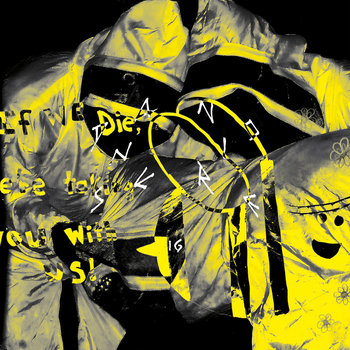
Hidden in plain sight, grinning through worry, living in insecurity – modern society has returned to a day-by-day race for survival. To be vulnerable is the new normal; afraid, a bare minimum. Something was bound to emerge from the quiet throngs of the new precariat, and Racine is such a voice, setting to music those modern lives defined by uncertainty.
Quelque Chose Tombe ("Something Falls") is a set of compositions that confronts demons both inner and outer head-on. Created during a period of necessary unemployment somewhere in Montreal – caring for one's health can take precedence over work – the music is both a grotesque dance of the goblins and the gentle opiatic breath of the protectors. It's a harrowing reflection of the prevalent vampiric hypochondria forcing a generation into fatigue.
The sounds crawling out of Racine speak with their own internal logic. Snippets of fractured tunes creak through perturbed post-digital soundscapes, blurred and fragmented along the way into haunting amorphous instrumentals. The two-part title track is multi-part sonic maze where raven-like pitch-bent notes gather, a broken rave theme punctures its way through bass fog, and silence clefts the music in two, ushering in a coda of heartbroken ambience. As the album's suite progresses, Racine shepherds mutant melodic themes in and out of earshot, like clear thoughts bringing temporary order to a state of emotional panic and withdrawal. A host of other sounds too – voices and birdsong, cybernetically deformed – populate Racine's scarred productions.
Emerging from Quelque Chose Tombe’s constant darkness however, is a latent sense of hope. Racine is turning modern vulnerability into a strength, creating a singular aesthetic to reflect and confront an uncomfortable present.
More information can be found here.
Read More
- Administrator
- Albums and Singles
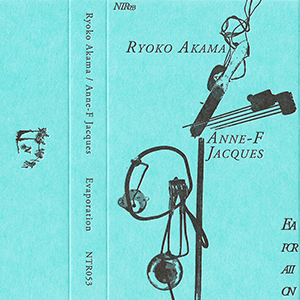 Both Ryoko Akama and Anne-F Jacques have large discographies focusing on the creation of music with improvised and constructed devices based on everyday objects, so working together makes perfect sense. The two live collaborations Evaporation is comprised of feature the duo blending the methodologies of live performance and art installation, with the self-guiding objects manipulated in real time as the two move about the performance space while adjusting the objects and mixing the sound. The resulting recordings are two unique, yet complementary long-form works that, while difficult at times, are captivating throughout.
Both Ryoko Akama and Anne-F Jacques have large discographies focusing on the creation of music with improvised and constructed devices based on everyday objects, so working together makes perfect sense. The two live collaborations Evaporation is comprised of feature the duo blending the methodologies of live performance and art installation, with the self-guiding objects manipulated in real time as the two move about the performance space while adjusting the objects and mixing the sound. The resulting recordings are two unique, yet complementary long-form works that, while difficult at times, are captivating throughout.
Recorded at two consecutive performances during the duo’s Winter 2018 tour, there are notable similarities, as well as differences, between the two pieces.Both are of equal length and using many of the same home-built idiosyncratic instruments, but the performance and the interactions of the two artists differ greatly.The combination works since there is a clear cohesion from one half of the tape to the other via the mechanical sound generators, but it is the human element that creates the most distinct variations.
The New York performance comes across as the more structured and composed one.After a brief passage of incidental "warming up" noises, looped almost-scraping like bits lead off, paired with the ringing of what sounds to be miniature bells or chimes.The source of these sounds is anything but clear, but they link together in their own sense of rhythm.Other elements are blended in by the duo, including additional ringing bells and a crackling/rattling bit that almost resembles popcorn or bubble wrap.Once electronic tonal sounds are blended in, including a rather harsh alarm tone; things turn towards darker spaces before drifting off.
Comparably, the Boston performance has a slower start, with an extended bit of object clattering and movement before the work begins properly.When it does, there is a notable amount of what sounds like equipment rolling around and an overall a looser feel to the performance.The approximated rhythms and repetition are not quite as prominent, and instead there is a greater presence of chaos.Random instrument sounds seem to pop up all around, and the whole piece feels more incidental than planned.The alarm type tone from the New York performance is here and pushed to the front, and the sharp, shrill character gives the whole piece a slightly more confrontational edge.
Home built devices and electronic experimentation may not make for the easiest of listening experiences, but Ryoko Ayama and Anne-F Jacques combine these two elements in an especially compelling way.I was most fascinated by the distinctly different character between the two performances despite them being only around 24 hours removed from one another.The first half captures the structured approach and the musicality of their distinctly un-musical instrumentation, while the second comes across less about composition and more about the full exploration of sound.The two performances complement each other perfectly and paired together makes for a fascinating, if occasionally challenging, tape.
Read More
- Administrator
- Albums and Singles
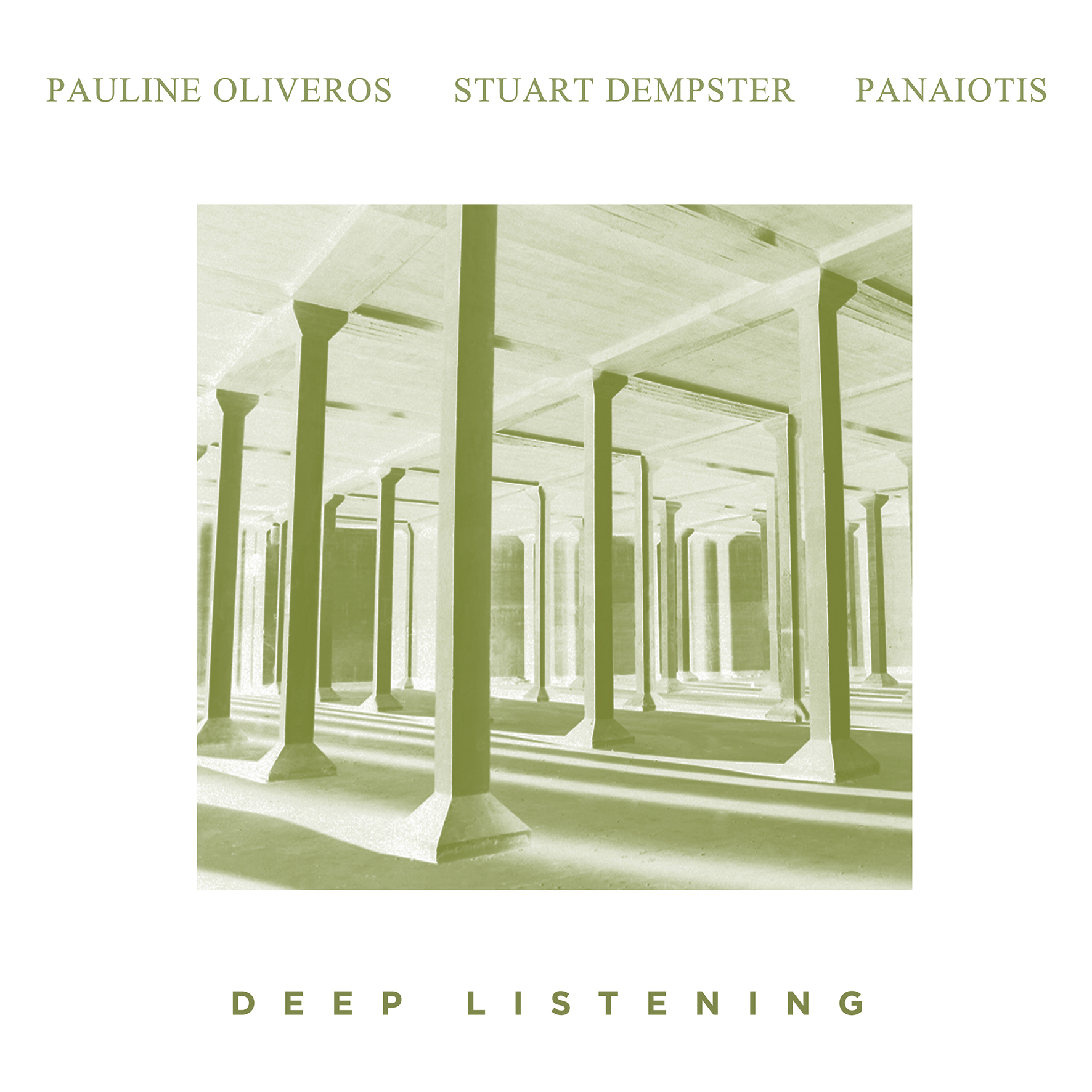 Originally released back in 1989 on the New Albion label, this landmark celebration of extreme natural reverb has finally received a long-deserved reissue in honor of its thirtieth anniversary. Obviously, production technology has evolved quite a lot since the '80s and site-specific performances have since become a somewhat common occurrence in the experimental music world, so Deep Listening does not feel quite as radical now as it did when it was first released. Nevertheless, it is still quite a strange and magical album, as I cannot think of any other accordionists who have descended into a two million gallon cistern to explore the incredible acoustic possibilities inherent in a 45-second reverb decay. As someone without a deep technical understanding of how reverb works, I found the new liner notes from recording engineer Al Swanson and Peter Ward quite helpful in explaining exactly why these recordings feel so unreal, but such knowledge is not necessary to appreciate this album: I have been able to enjoy the epic and eerie slow-motion beauty of Deep Listening for years without knowing a single goddamn thing about phase integrity or slap-back. While I cannot say I was exactly clamoring to see this album released in the vinyl format, I am absolutely delighted to see it resurrected and back in the public consciousness.
Originally released back in 1989 on the New Albion label, this landmark celebration of extreme natural reverb has finally received a long-deserved reissue in honor of its thirtieth anniversary. Obviously, production technology has evolved quite a lot since the '80s and site-specific performances have since become a somewhat common occurrence in the experimental music world, so Deep Listening does not feel quite as radical now as it did when it was first released. Nevertheless, it is still quite a strange and magical album, as I cannot think of any other accordionists who have descended into a two million gallon cistern to explore the incredible acoustic possibilities inherent in a 45-second reverb decay. As someone without a deep technical understanding of how reverb works, I found the new liner notes from recording engineer Al Swanson and Peter Ward quite helpful in explaining exactly why these recordings feel so unreal, but such knowledge is not necessary to appreciate this album: I have been able to enjoy the epic and eerie slow-motion beauty of Deep Listening for years without knowing a single goddamn thing about phase integrity or slap-back. While I cannot say I was exactly clamoring to see this album released in the vinyl format, I am absolutely delighted to see it resurrected and back in the public consciousness.
For some reason, my mind has proven extremely resistant to viewing Deep Listening as anything other than a Pauline Oliveros album.Obviously, she is the most famous and influential member of this trio, as well as the artist most closely associated with "deep listening" as a kind of philosophy, but it would be more accurate to view this album as both the birth of Deep Listening Band and the beginning of a long, fruitful creative partnership with composer Stuart Dempster.In fact, it is Dempster's trombone and didgeridoo playing that most prominently sets the tone for the album's two most memorable pieces: the bookends "Lear" and "Nike."To some degree, that suggests "shallow listening" on my part, as Oliveros's subtly shifting bed of lingering accordion tones is crucial in shaping the subtly hallucinatory and harmonically rich backdrop in "Lear."Nevertheless, it is the deep, roiling drone of the didgeridoo that gives the piece its heft and it is the slow, majestic trombone melody that evokes its distinctively timeless and somber feel.That melancholy and vaguely medieval-sounding aesthetic is apt, as "Lear" was incorporated into Lee Breuer's production of King Lear (though I do not know if it was originally composed with that in mind)."Nike," on the other hand, is a bit more abstract and inventive, as it gradually takes shape from a ghostly miasma of voices, clattering metal pipes, and breathy conch shell drones.Admittedly, it takes a little while to fully come together, but it is a quite a bizarre and compelling piece nonetheless, resembling an angelic choir in a desolate factory that gradually curdles into an infernal-sounding crescendo that calls to mind an ancient battlefield littered with corpses (or at least a banshee caught in a thunderstorm).  
Between those two poles, there are a pair of more subtle and nuanced pieces: "Suiren" and "Ione."For the most part, "Ione" is kind of a beatific and meditative inversion of the palette employed for "Lear," as the didgeridoo and accordion converge into a languorously undulating bed of shifting harmonies.More importantly, Dempster's trombone melodies are not at all portentous and blood-soaked, instead lazily unfurling like smoke in something approximating a major key.It is not a bad piece by any means, but "Suiren" is considerably more compelling and is arguably the one piece that most fully captures the transformative alchemy of the cistern's unique acoustics. Aside from an unconventionally employed garden hose, Oliveros, Dempster, and Peter Ward completely abandoned their formidable arsenal of instruments, seashells, and metal pipes to see what they could achieve solely with the sound of their voices.As it turns out, they could achieve quite a lot, as "Suiren" unfolds as a phantasmagoric fog that lies somewhere between Gregorian chant and time-stretched Tuvan throat-singing.It is quite a hauntingly lovely piece and also a comparatively quiet one, which makes it the arguably the one that benefits the most from deep listening (there are no dramatic motifs to steal the focus away from its nuances).It is also very effective illustration of one of Ward's observations about the acoustic character of the space: aside from the long decay, the smooth and pure nature of the cistern's reverb "makes it impossible to tell where the performer stops and the reverberation takes over."
Another illustrative piece is "Balloon Payment," one of the three bonus tracks that Important has added for their reissue: it is nothing more than the sound of a balloon being popped, leaving roughly 45 seconds of rumbling reverberation in its wake.It is admittedly kind of a throwaway piece that only needs to be heard once, but the other two newly added songs ("Phantom" and "Geocentric") are an inspired curatorial inclusion, as they broaden the album's mood palette and end Deep Listening on a considerably brighter note than the war-like intensity of "Nike."Notably, all three new pieces were taken from Deep Listening Band's The Ready Made Boomerang (1991), which was recorded in the same cistern with a somewhat expanded ensemble.I suspect that means Important has no plans to reissue that album and that decision makes sense: the primary appeal of Deep Listening is that it was a cool idea and a fascinating process: trying to unravel the blurry relationships between sounds and their lingering afterimages makes for a very absorbing listen.It was a great experiment and statement of intent, but Dempster and Oliveros did not need to repeatedly collaborate with that same cistern once they learned its acoustic secrets.Moreover, these pieces are far from the best that Dempster and Oliveros have recorded together, as Important's previous Deep Listening Band reissues capture the pair in significantly more sophisticated and refined form.As such, Deep Listening is unquestionably a significant and influential album, but it should be appreciated as the initial creative breakthrough that led to even better things rather than something akin to a stand-alone crown jewel in Oliveros's discography.
Samples:
 
Read More
- Administrator
- Albums and Singles
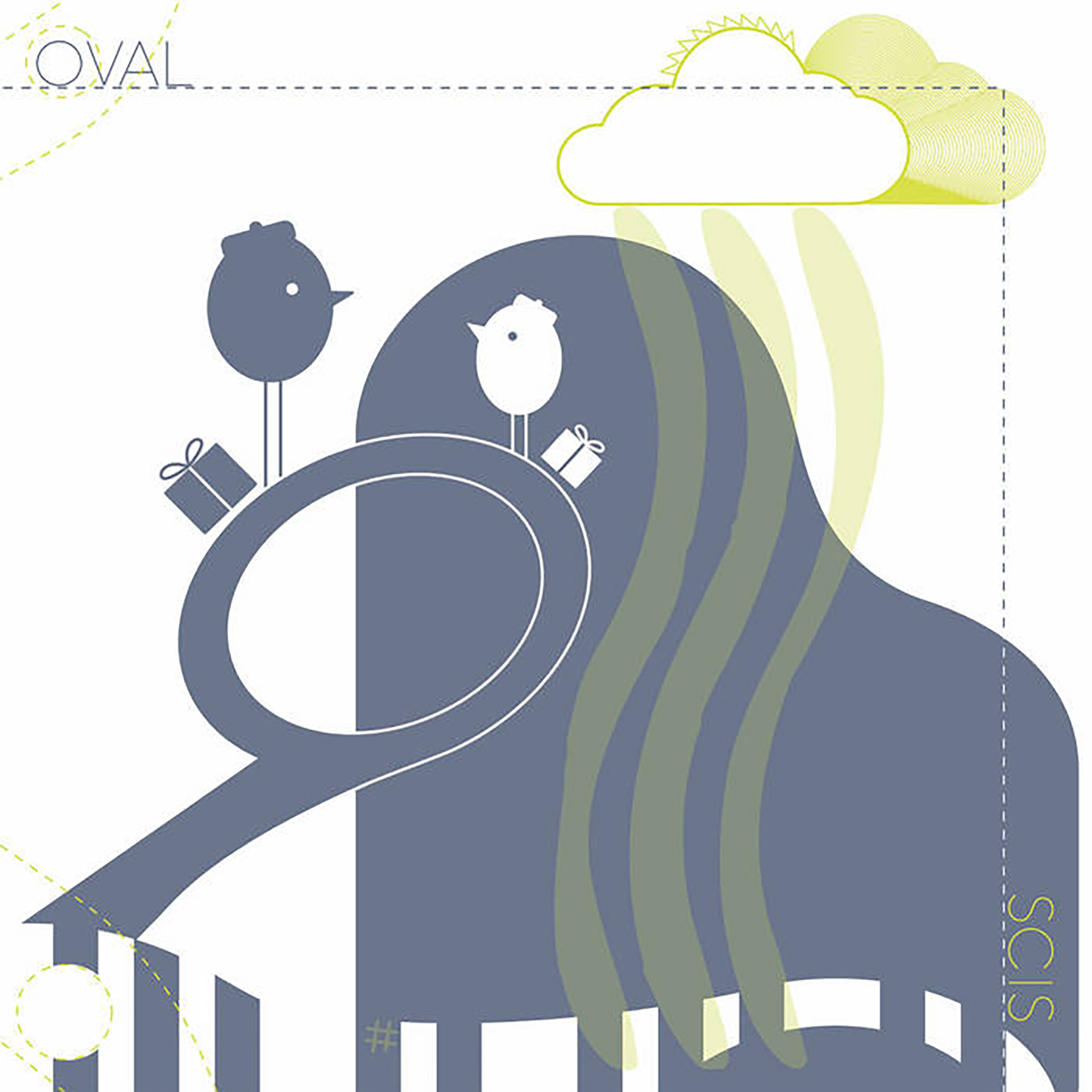 I am hardly unique in this regard, but Markus Popp's classic run of mid-'90s albums made a huge impression on me, acting as a Rosetta Stone that led me to a world of radical (and also not-so-radical) electronic music far more compelling than the punk and industrial music that I was into at the time. Sadly, I cannot say that I have been a particularly loyal fan over the ensuing two decades, so I did not stick with Popp through his various bold attempts to reinvent his aesthetic. However, his work has never stopped interesting me–it is just that the allure of his earlier work was its perfect balance of bold concept and skilled execution. And, of course, an artist only gets to make a mind-blowing first impression once. As a result, later Oval albums simply did not leave a deep impression on me anything like that left by 94 Diskont. That said, there is definitely something to be said for masterful execution on its own and Scis fitfully captures Popp at the absolute height of his powers in that regard (particularly on the second half of the album). While my nostalgia—and expectation—clouded vision makes it impossible to rank this album within Oval's discography with any degree of objectivity, I feel quite confident in stating that some of the individual songs on Scis easily stand among the finest of Popp's long career (especially "Mikk").
I am hardly unique in this regard, but Markus Popp's classic run of mid-'90s albums made a huge impression on me, acting as a Rosetta Stone that led me to a world of radical (and also not-so-radical) electronic music far more compelling than the punk and industrial music that I was into at the time. Sadly, I cannot say that I have been a particularly loyal fan over the ensuing two decades, so I did not stick with Popp through his various bold attempts to reinvent his aesthetic. However, his work has never stopped interesting me–it is just that the allure of his earlier work was its perfect balance of bold concept and skilled execution. And, of course, an artist only gets to make a mind-blowing first impression once. As a result, later Oval albums simply did not leave a deep impression on me anything like that left by 94 Diskont. That said, there is definitely something to be said for masterful execution on its own and Scis fitfully captures Popp at the absolute height of his powers in that regard (particularly on the second half of the album). While my nostalgia—and expectation—clouded vision makes it impossible to rank this album within Oval's discography with any degree of objectivity, I feel quite confident in stating that some of the individual songs on Scis easily stand among the finest of Popp's long career (especially "Mikk").
I think I can say with absolute certainty that my head would probably explode if I ever tried to fully understand Markus Popp's creative process, as he has made a career of self-imposed constraints, pushing software to its limits, and manipulating complex webs of loops with surgical precision.On top of that, he is quite a creatively restless guy, so he has no problem cheerfully abandoning a winning formula to attempt something unexpected and totally unfamiliar whenever the inclination strikes him.As such, articulating exactly what sets Scis apart from other Oval releases is no simple task.That said, Popp has stated that one of his driving objectives on past albums was to "reduce his own visible hand in the music" and that he is now trying to do the opposite through the use of acoustic instruments and "live" performance.I can certainly see evidence of that objective in the comparative looseness and sense of gleeful spontaneity that pervades these pieces, yet that does not make them any less fiendishly complex.Similarly, there are recognizably acoustic instruments throughout the album, such as the piano melody at the heart of the opening "Twirror," but Popp has used acoustic drums and human vocalists in the past and "Twirror" ultimately erupts into a pummeling maelstrom of electronic beats, buzzing electronic chaos, and electronically gnarled textures.Consequently, the difference is mostly just the balance between those various elements and how they are used.For the most part, Popp juggles those divergent approaches masterfully, though his beats tend to be somewhat rigid and thudding even while the rest of his aesthetic is basically a master class on how to make visionary, forward-thinking electronic music.That is a hurdle of sorts at times, but not an insurmountable one.
Unsurprisingly, one of the perks of Popp's expanded palette and hybrid software/live approach is that Scis is a remarkably varied album, albeit one that is held together beautifully by its propulsive rhythms and strong melodic focus.In fact, I am morbidly curious about how much material Popp must have discarded, as every single one of these ten songs has a strong enough motif at its core to be strong single.The only indication that Popp was not in an constant state of infallible, white-hot inspiration is that he has a tendency to return again and again to the same dynamic trajectory (a quiet, beatless lead-in that builds to a pounding kick drum crescendo).That tends to give a number of pieces an overly familiar feel on the first half of the album.It is not ineffective though, even if the power of the percussion overshadows some of the intricacy and beauty of Popp's dazzling melodic and textural achievements.It feels somewhat akin to a killer jazz ensemble enlisting a muscular rock drummer to transcend genre constraints and expand their appeal.As the album progresses, however, Popp finds some imaginative ways to untether himself from that recurring rhythmic framework.In "Improg," for example, Popp keeps the beat buried deep in the mix and periodically allows it to drop out altogether, which serves the delicately plinking and exhalation-like music quite nicely.Moreover, when the piece inevitably does increase in rhythmic intensity, the drums are periodically overpowered by a stammering and garbed melodic hook.Elsewhere, Popp organically balances the clattering and pounding percussion crescendo in "Piqqo" with an escalating surge of gorgeously blooping and swooning synth tones.The album's strongest piece ("Mikk") even goes one step further, bulldozing over its climactic beat explosion with an intense, throbbing pulse and a spark-throwing onslaught of skipping and distressed loops.  
After being struck by how much I loved some of the pieces on Scis, I decided to go back and re-listen to some other recent Oval albums and realized that I had woefully underappreciated several of them.More significantly, I belatedly realized that it is frankly amazing that just one person (mostly) is responsible for such a varied and visionary body of work, as Popp's oeuvre represents a truly improbable convergence of conceptual genius, tight songcraft, strong melodic sensibility, creative arrangements, and production mastery that blurs the lines between several genres.All of those elements are in ample abundance on Scis, which adds up to a legitimately dazzling and vibrant batch of songs.Moreover, Popp's curious approach to percussion seems to be a deliberate and subversive one, as he notes that he approached beats as an "instrumentalist rather than a beat-maker."On its face, that is an enigmatic statement, but I believe it means that he views drums like a classical composer views a timpani: there are actual grooves in every song, but they are used to more for shifts in dynamic intensity that as an end unto themselves.That said, I still wish those beats were more fluid and a bit less overpowering (a feat achieved only on "Oxagon"), as the music on Scis is hook-filled, nuanced, and playfully experimental enough to make this a near-masterpiece.In its current form, that likely means that there are a handful of songs that I will likely play to death, but Scis is an album that is absolutely screaming for a remix treatment: all of the greatness is there, but several of these songs could use a bit more space and rhythmic fluidity to realize their full potential.Until that happens, however, Scis is a very strong album that reminds me exactly why I was—and should continue to be—a devoted fan of Popp's work.
Samples can be found here.
Read More
- Administrator
- Albums and Singles

The Air Texture series returns, this time inviting Rrose and Silent Servant to curate the seventh release.
The Air Texture compilation series, the core project of our label, asks two producers to collaborate on a combined release. Typically the two are connected in some way through past projects. The only rules are no rules - focus on finding music that isn't just straight-ahead club music. Within this approach, the series has presented a diverse array of music on the edges of experimental and dance - and always unreleased new music.
Rrose is the latest incarnation of Seth Horvitz, an interdisciplinary artist from California (now residing in London) whose 20+ year history weaves in and out of both dance music culture and academic circles.
The work of Seth Horvitz focuses on the limits of perception and the idiosyncrasies of machines, and the Rrose project focuses these ideas into an immersive and noisy, yet highly detailed form of techno meant to move the mind and body in equal measures. On stage, Rrose often stands in the shadows, going by he and she interchangeably (Rrose's name and image allude to Duchamp’s female alter-ego) – an implied interrogation of gender norms and artistry in techno circles.
Currently residing in Los Angeles, Silent Servant's Juan Mendez was instrumental in the reboot of the legendary Sandwell District label and the Jealous God label with Regis and James Ruskin.
His DJ and live sets are another matter of inventiveness. The superfluous eliminated, Silent Servant has, for years, been rewiring the minds and moving the bodies of those seeking the most meaningful and potent energies that electronic music has to offer.
Silent Servant's productions reference warehouse techno, industrial noise and post-punk reworked to form a uniquely modern style - a vitality so controlled and concentrated that it captivates immediately.
Both individuals are old friends and collaborators going back to the 1990s. Juan's early label Cytrax released one of Seth's first records under his Sutekh moniker. In 1998, they went on their first tour of Germany together with other artists from California.
When asking the artists on their process of selection, Rrose states: “"I selected a group of artists that would reflect both the dancefloor and experimental/avant-garde side of my influences. I wanted to see if I could make a compilation that sounded as cohesive as an album, but with contributions from a diverse range of artists. I asked the artists to focus on "sound, space, and drones" over easily identifiable "beats" and "songs" - with the intention of pushing the techno/dancefloor artists out of their comfort zones."
Silent Servant conveys "The choices on this compilation were based on people that I respect on all levels. It's a very mixed bag and I have a personal connection to each one of these people, and they are all people I knew would have something interesting to say. I feel grateful for the opportunity to have brought all of these people's art together for this project."
Featuring unreleased tracks from underground talent including Anthony Child (Surgeon), Ron Morelli, Laurel Halo, Octo Octa, Phase Fatale, Luke Slater, Function, as well as Rrose and Silent Servant and legends Laetitia Sonami and Charlemagne Palestine.
More information can be found here.
Read More
- Administrator
- Albums and Singles
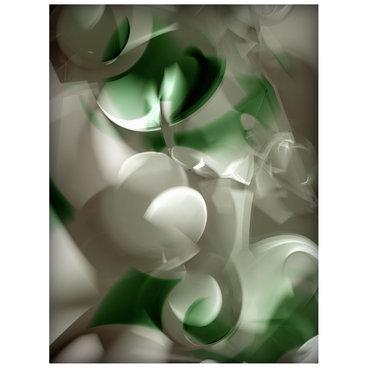
Workaround is the lucidly playful and ambitious solo debut album by rhythm-obsessive musician and DJ, Beatrice Dillon for PAN. It combines her love of UK club music's syncopated suss and Afro-Caribbean influences with a gamely experimental approach to modern composition and stylistic fusion, using inventive sampling and luminous mixing techniques adapted from modern pop to express fresh ideas about groove-driven music and perpetuate its form with timeless, future-proofed clarity.
Recorded over 2017-19 between studios in London, Berlin and New York, Workaround renders a hypnotic series of polymetric permutations at a fixed 150bpm tempo. Mixing meticulous FM synthesis and harmonics with crisply edited acoustic samples from a wide range of guests including UK Bhangra pioneer Kuljit Bhamra (tabla); Pharoah Sanders Band's Jonny Lam (pedal steel guitar); techno innovators Laurel Halo (synth/vocal) and Batu (samples); Senegalese Griot Kadialy Kouyaté (Kora), Hemlock's Untold and new music specialist Lucy Railton (cello); amongst others, Dillon deftly absorbs their distinct instrumental colours and melody into 14 bright and spacious computerized frameworks that suggest immersive, nuanced options for dancers, DJs and domestic play.
Workaround evolves Dillon's notions in a coolly unfolding manner that speaks directly to the album’s literary and visual inspirations, ranging from James P. Carse's book "Finite And Infinite Games" to the abstract drawings of Tomma Abts or Jorinde Voigt as well as painter Bridget Riley’s essays on grids and colour. Operating inside this rooted but mutable theoretical wireframe, Dillon's ideas come to life as interrelated, efficient patterns in a self-sufficient system.
With a naturally fractal-not-fractional logic, Dillon's rhythms unfold between unresolved 5/4 tresillo patterns, complex tabla strokes and spark-jumping tics in a fluid, tactile dance of dynamic contrasts between strong/light, sudden/restrained, and bound/free made in reference to the notational instructions of choreographer Rudolf Laban. Working in and around the beat and philosophy, the album’s freehand physics contract and expand between the lissom rolls of Bhamra's tabla in the first, to a harmonious balance of hard drum angles and swooping FM synth cadence featuring additional synth and vocal from Laurel Halo in "Workaround Two," while the extruded strings of Lucy Railton create a sublime tension at the album’s palate-cleansing denouement, triggering a scintillating run of technoid pieces that riff on the kind of swung physics found in Artwork's seminal "Basic G," or Rian Treanor's disruptive flux with a singularly tight yet loose motion and infectious joy.
Crucially, the album sees Dillon focus on dub music's pliable emptiness, rather than the moody dematerialization of reverb and echo. The substance of her music is rematerialized in supple, concise emotional curves and soberly freed to enact its ideas in balletic plies, rugged parries and sweeping, capoeira-like floor action. Applying deeply canny insight drawn from her years of practice as sound designer, musician and hugely knowledgable/intuitive DJ, Workaround can be heard as Dillon's ingenious solution or key to unlocking to perceptions of stiffness, darkness or grid-locked rigidity in electronic music. And as such it speaks to an ideal of rhythm-based and experimental music ranging from the hypnotic Senegalese mbalax of Mark Ernestus's Ndagga Rhythm Force, through SND and, more currently, the hard drum torque of DJ Plead; to adroitly exert the sensation of weightlessness and freedom in the dance and personal headspace.
More information can be found here.
Read More
- Administrator
- Albums and Singles
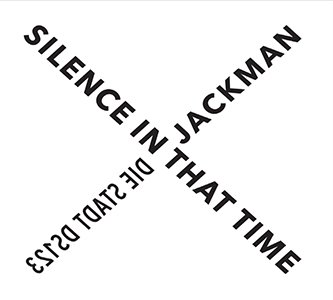
Die Stadt presents the follow up to last year’s critically acclaimed album HERBSTSONNE (Die Stadt / DS119), SILENCE IN THAT TIME (DS123) is a direct offshoot of the former album, adding more sounds to the overall sound palette. Recorded at RMS Studios South London in 2019, the single 42 min. long track stands as another distinctively beautiful and haunting work in the artist’s discography.
Release date February 9, 2020, limited to 300 copies.
Artwork by Jonathan Coleclough.
Read More

